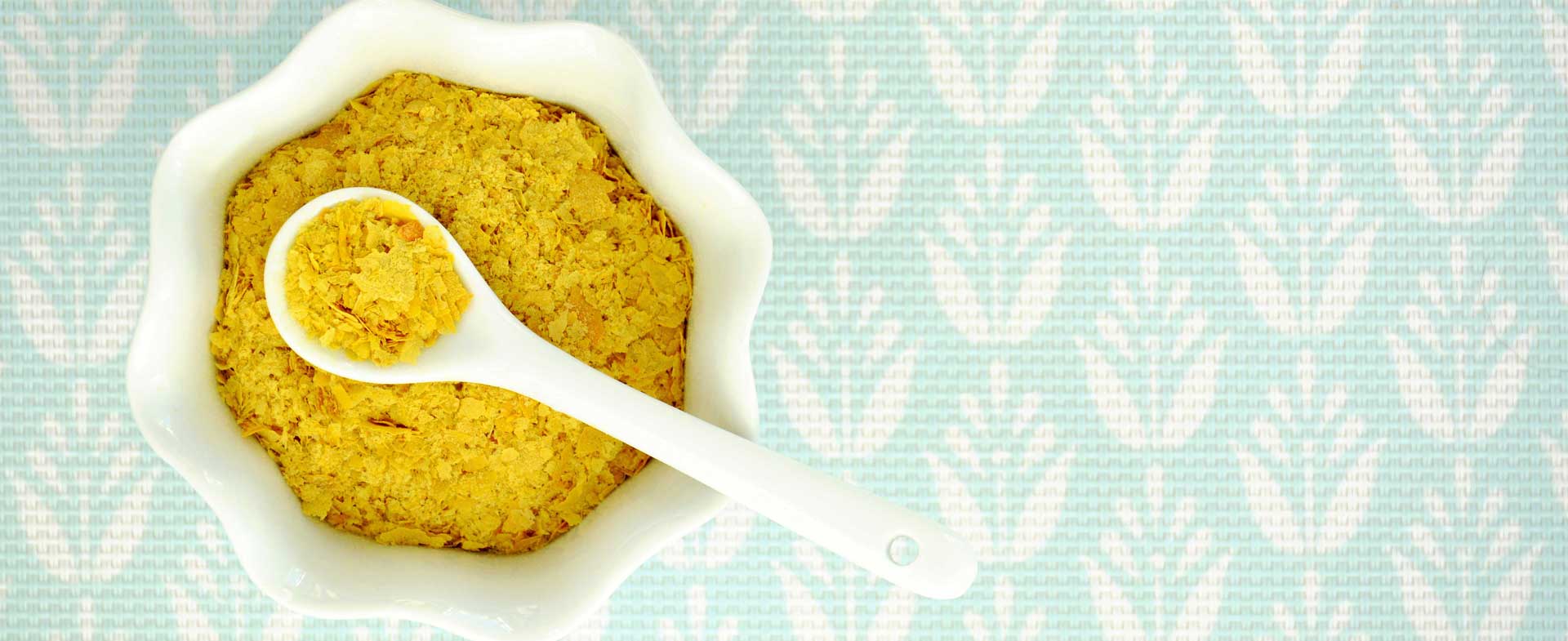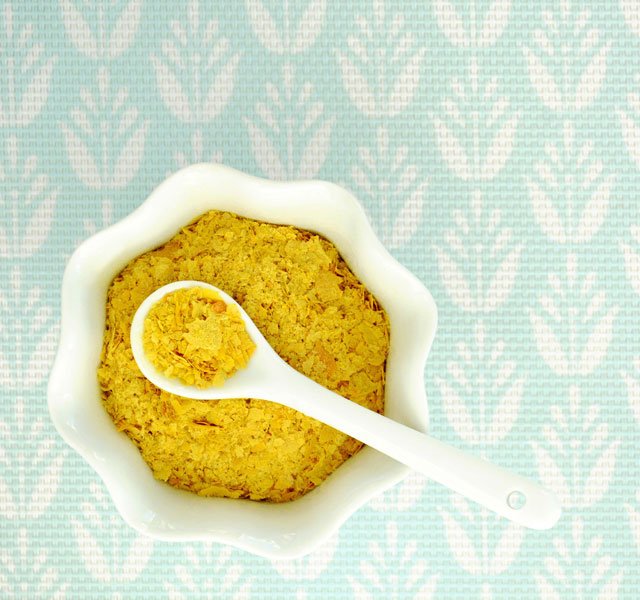Some foods are as delectable to say as they are to eat: jambalaya, tiramisu, edamame… Alternatively, the term nutritional yeast doesn’t exactly exhilarate your taste buds.
Nonetheless, in recent years, health-conscious eaters everywhere have been putting nutritional yeast (affectionately dubbed “nooch” for short) in or on top of their eggs, sprinkling it on popcorn and using it as a key ingredient in soups, stews and sauces.
“The nice thing about nutritional yeast is that it’s low in sodium, sugar and fat,” says Erin Beattie, a registered dietitian at Henry Ford Health. “It also works as a good flavoring agent, and it appeals to many audiences since it’s free of dairy, animal products and gluten.”
FAQ: Nutritional Yeast
 Some call nutritional yeast a superfood. Others claim it’s a critical ingredient, especially for vegans and vegetarians. Others say it’s received a lot of unnecessary attention. What’s the truth? We tease it out in this FAQ with Beattie.
Some call nutritional yeast a superfood. Others claim it’s a critical ingredient, especially for vegans and vegetarians. Others say it’s received a lot of unnecessary attention. What’s the truth? We tease it out in this FAQ with Beattie.
Q: What is nutritional yeast?
A: Nutritional yeast is deactivated yeast. It’s the same strain of yeast we use for making bread and beer, but without the leavening agent. In other words, nutritional yeast can’t make dough rise.
Q: What does nutritional yeast taste like?
A: Nutritional yeast has a unique savory flavor that resembles cheese, making it a great alternative for adding flavor without salt, sugar or fat. Some people say it adds a nutty flavor to foods. It can add more texture to cold dishes like salads and yet turns creamier when added to hot dishes. If you want to purchase a sample size before buying a whole bottle, some grocery stores sell it in the bulk section.
Q: How is nutritional yeast made?
A: To make nutritional yeast, manufacturers put yeast into a sugar-based medium, such as molasses, sugar cane or beets. The yeast grows for several days and then is pasteurized to deactivate it. What’s left is a paste that gets rolled out, dried and crumbled into flakes. Most manufacturers fortify the yeast with nutrients, particularly B vitamins such as niacin, pantothenic acid, B6, folate and B12 before packaging.
Q: What are the dietary perks of nutritional yeast?
A: The main reason people use it is to get more nutrients. Vegans and vegetarians in particular may look to fortified nutritional yeast to get sufficient B12 (commonly found in meat, fish, poultry, eggs, dairy, and some fortified cereals). One tablespoon of fortified nutritional yeast often contains significant amounts of B vitamins and some trace minerals, but this depends on the specific product. Always be check out the nutrition facts label: Many brands of nutritional yeast disclose this information, but the law doesn’t require it.
Q: What are some ways to incorporate nutritional yeast into my diet?
A: Nutritional yeast is very versatile. You can mix it with nuts to make plant-based “cheese.” You can use it in pasta dishes as a substitute for grated Parmesan. You can also incorporate it into tomato and other sauces for a savory kick. Don’t want to cook? Sprinkle it on top of soups, salads or popcorn to add texture.
Q: Can you overdo nutrients by eating too much nutritional yeast?
A: It’s highly unlikely. All B vitamins are water soluble, so anything you don’t absorb gets excreted through your urine. But unless you’re piling nooch flakes on your plate at every meal, it’s very difficult to overdose on the nutrients in nutritional yeast.
Q: Is there anyone who should steer clear of nutritional yeast?
A: Unless you have a yeast allergy or your doctor has prescribed a yeast-free diet, nutritional yeast is probably safe for you to eat. There’s some question about whether people with inflammatory bowel disease should avoid nutritional yeast, but more research is needed. If you’re concerned, meet with a qualified medical professional, such as a registered dietitian, before incorporating nutritional yeast into your diet.
To Yeast or Not to Yeast
In addition to B vitamins, nutritional yeast contains fiber and protein. It’s affordable, easy to find and it’s safe for almost anyone to ingest. You can find it in the baking or condiment aisles at your local grocery store or in the bulk section at a health food store.
Don’t like the taste? You can usually get sufficient B vitamins from food. Leafy greens, whole grains and legumes are good sources of most B vitamins. Vitamin B12 is abundant in fish, meat, eggs and dairy products.
Whether you’re a nooch fan or not, keep in mind that there’s no single superfood. Instead, healthy eating is obtaining a wide variety of nutrient-dense foods on a regular basis.
To learn more about healthy eating, consider signing up for a Henry Ford grocery store tour, or schedule an appointment with a registered dietitian. Visit henryford.com or call 1-800-HENRYFORD (436-7936) to get started.
Erin Beattie, RDN, is a registered dietitian nutritionist with Henry Ford Health who offers one-on-one consultations through the Center for Integrative Medicine and the Center for Health Promotion & Disease Prevention, along with working in the community through Henry Ford’s Generation with Promise Program.



